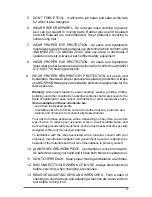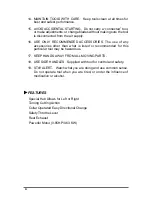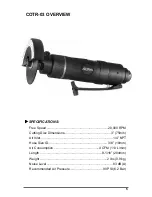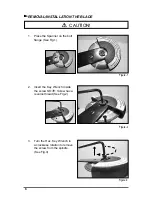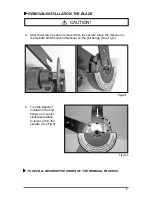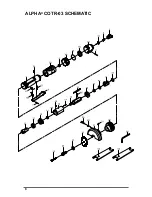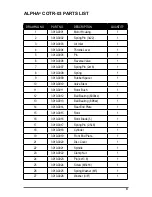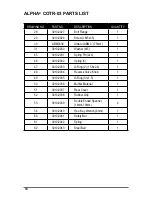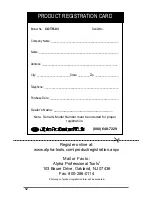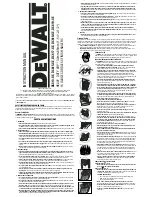
3
5.
DON’T FORCE TOOL. It will do the job better and safer at the rate
for which it was designed.
6.
WEAR PROPER APPAREL. Do not wear loose clothing or jewelry
as it can get caught in moving parts. Rubber gloves and insulated
non-skid footwear are recommended. Wear protective covering to
contain long hair.
7.
WEAR PROPER EYE PROTECTION. All users and bystanders
must always wear proper personal eye protection which conform with
ANSI/ISEA Z87.1 (CAN/CSA Z94.3). Also use a face or dust mask if
operation is dusty. Always wear certified safety equipment.
8.
WEAR PROPER EAR PROTECTION. All users and bystanders
must wear proper personal ear protection which conforms with ANSI
S12.6 (S3.19) hearing protection.
9.
WEAR PROPER RESPIRATORY PROTECTION.
All users and
bystanders must wear proper personal respiratory protection. Always
use NIOSH/OSHA approved respiratory protection appropriate for the
dust
exposure.
Warning:
Some dust created by power sanding, sawing, grinding, drilling,
polishing and other construction activities contains chemicals known to the
State of California to cause cancer, birth defects, or other reproductive harm.
Some examples of these chemicals are:
- Lead from lead-based paints
- Crystalline silica from bricks, cement and other masonry products, and
- Arsenic and chromium from chemically-treated lumber.
Your risk from these exposures varies, depending on how often you do this
type of work. To reduce your exposure, work in a well ventilated area, and
work with approved safety equipment, such as dust masks that are specially
designed to filter out microscopic particles.
To familiarize with the risks associated with a material, consult with your
employer, manufacturer/supplier and government agencies regarding the
hazards of the materials and their recommendations to protect yourself.
10.
ALWAYS SECURE WORK PIECE. Use clamps or a vise to hold work.
It’s safer than using your hand and it frees both hands to operate tool.
11.
DON’T OVERREACH. Keep proper footing and balance at all times.
12.
DISCONNECT TOOLS WHEN NOT IN USE. Always disconnect tool
before servicing; when changing accessories.
13.
REMOVE ADJUSTING KEYS AND WRENCHES.
Form a habit of
checking to see that keys and adjusting wrenches are removed from
tool before turning it on.





